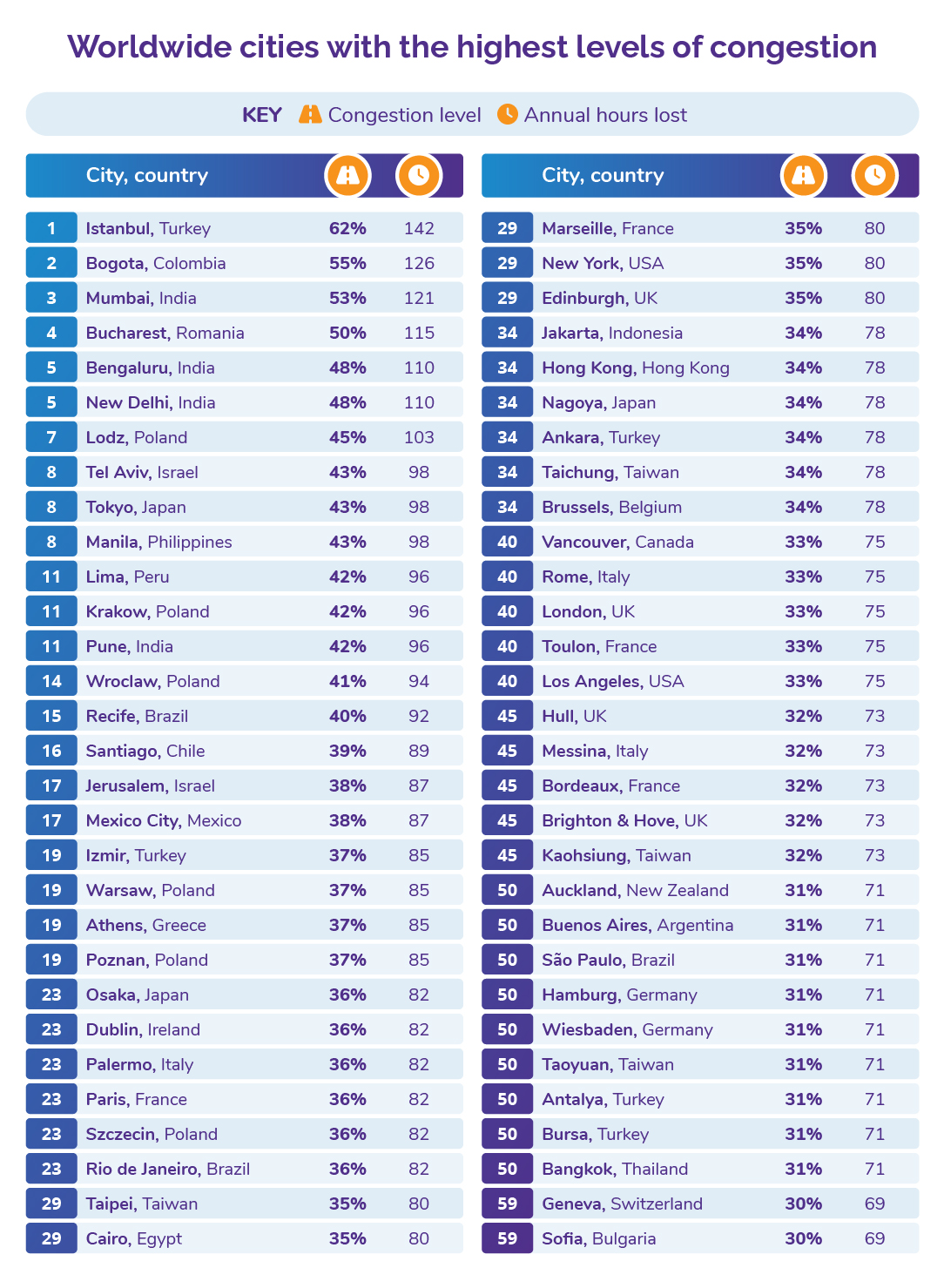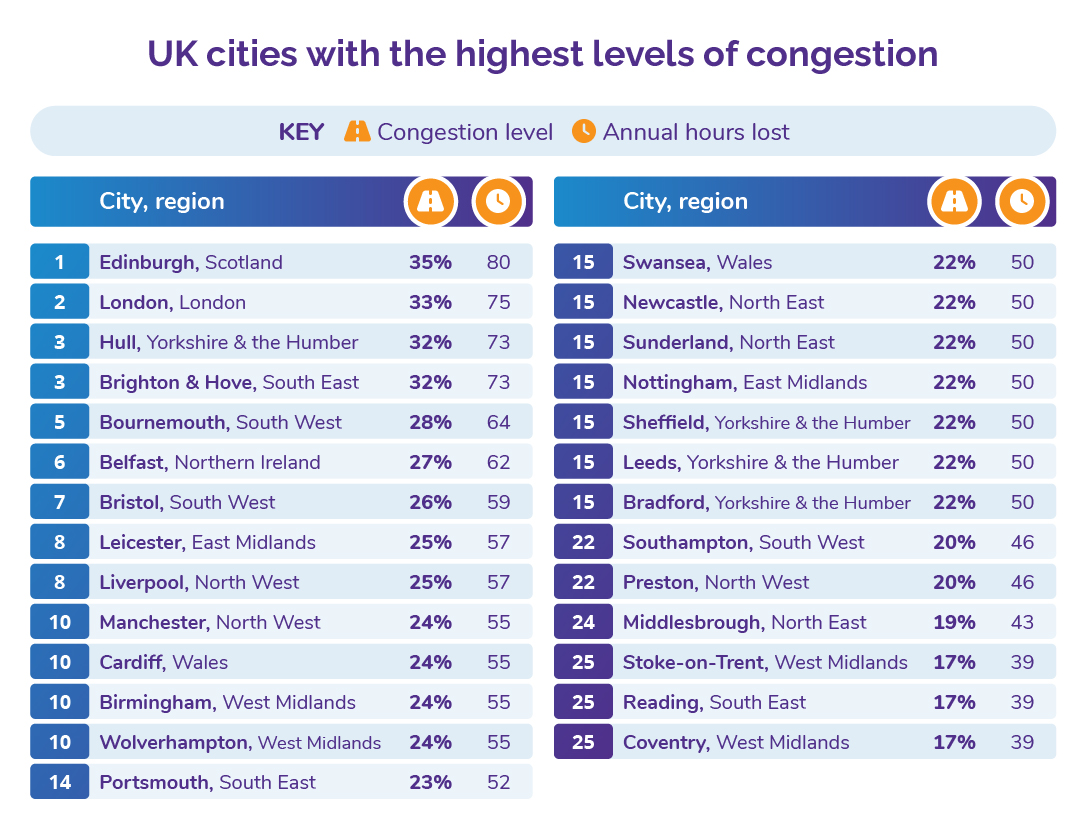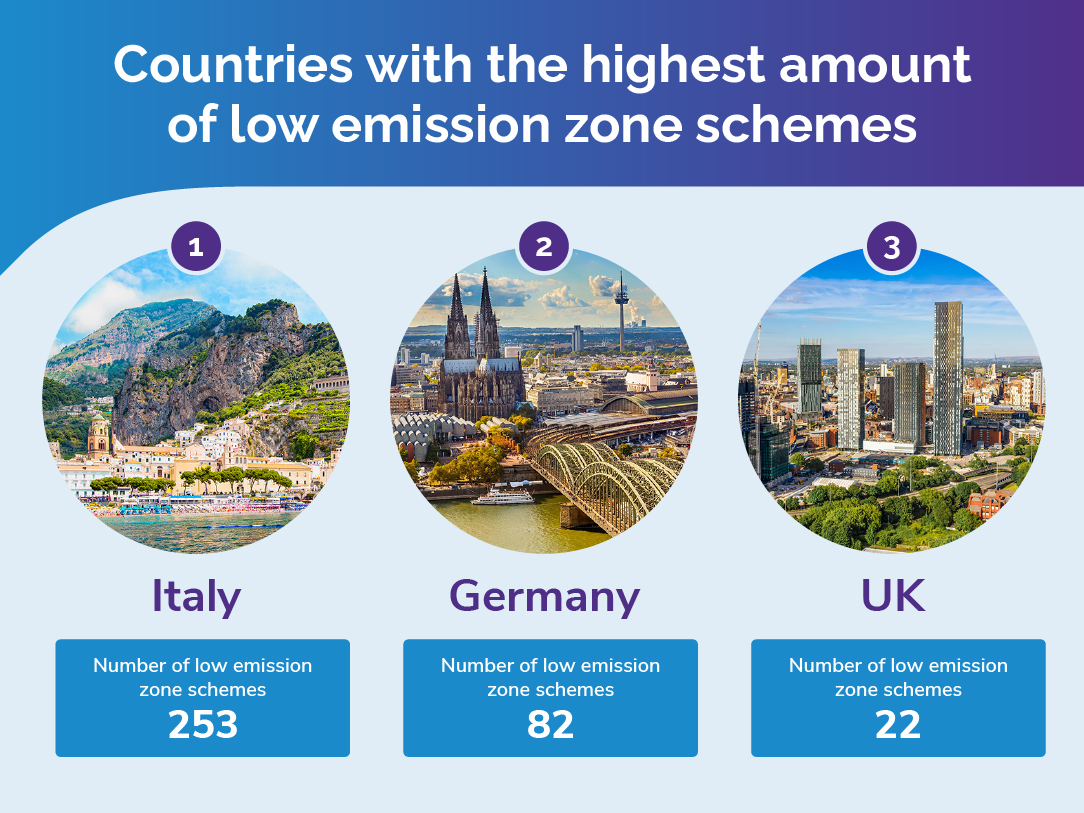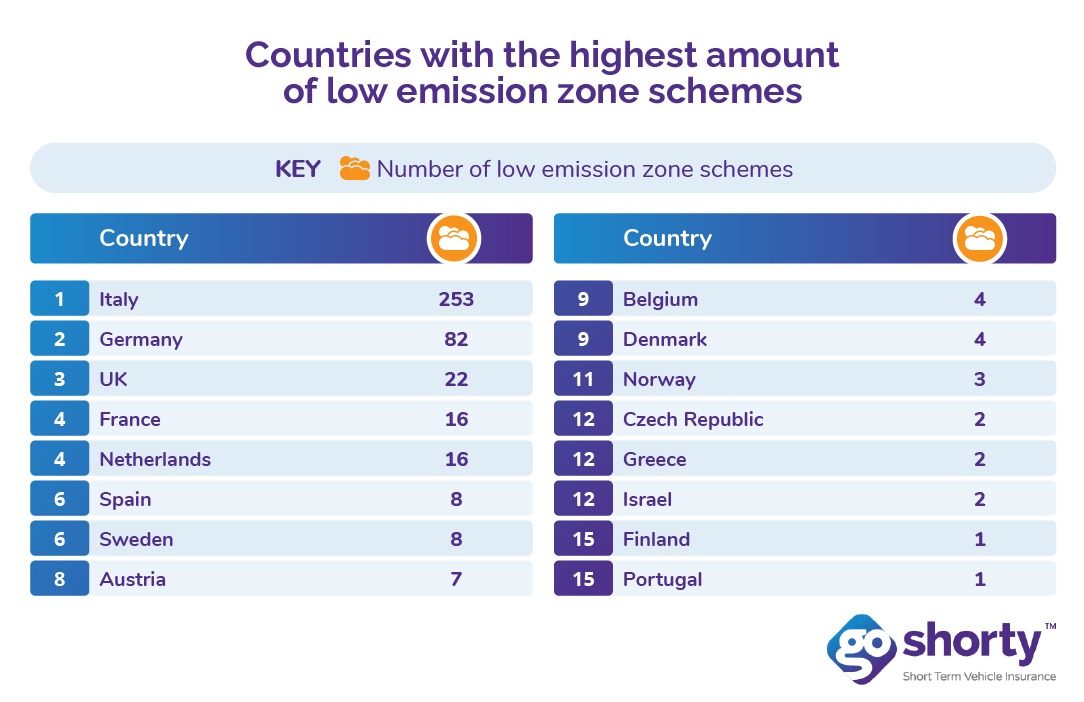The world’s most congested cities revealed
A lot of people all over the world use a car for their daily commute or to run errands, it’s a source of transportation that is readily available. Yet, one of the most significant downsides is when you are unfortunately stuck in gridlocked traffic.
In 2020 we saw a drop in congestion and traffic, due to the pandemic. However, in 2022 we’re seeing more people going places again, returning to a form of normal. As such, there has been a worldwide rise in congestion, despite the rising cost of fuel prices.
With this rise in congestion, we at GoShorty, have looked at the TomTom Congestion Index to determine which cities have the busiest roads. We also looked at which countries have implemented the most anti-emissions policies to combat extra pollution caused by traffic levels.

- Turkey, Istanbul
Annual hours lost: 142 | Congestion Level: 62%
Istanbul is the most populated city in Turkey and Europe, though the city technically lies in both Europe and Asia, along the Bosporus Strait. As of 2021, it has a congestion level of 62%, making it the most congested city in the world. That is an 11% increase from 2020 and means that on average, car journeys will take 62% longer. That has also led to around 142 hours lost being spent in traffic jams – the equivalent to nearly 6 whole days!
- Colombia, Bogota
Annual hours lost: 126 | Congestion Level: 55%
Another capital city, this time it’s Bogota, one of the largest cities in the world and located almost exactly in the centre of Colombia. Congestion levels in 2021 for Bogota were at 55%, which seems high, however, it is only a 2% increase from the previous year. However, Bogota still lost 126 hours over the year due to being stuck in traffic, making a drive in the city look a little less appealing.
- India, Mumbai
Annual hours lost: 121 | Congestion Level: 53%
Mumbai is the capital city of the Indian state of Maharashtra and is the eighth most populous city in the world, with around 20 million people. The city is also home to three UNESCO World Heritage Sites, a denotation of the city’s rich cultural heritage. While the city has a congestion rate of 53%, which is the same as 2020, at least there’s no increase in this statistic. On top of that, it has decreased by 12% since the rate of 2019, marking a positive change in traffic and potentially the emissions in the city.


- Edinburgh
Annual hours lost: 80 | Congestion Level: 35%
Edinburgh is the Scottish capital and the seventh-most populous city in the United Kingdom and also has the busiest roads. Throughout 2021, the city’s congestion level was 35%, which is a 3% increase on 2020, yet a 6% decrease on 2019. With the current rate continuing to increase, Edinburgh may retain the busiest roads in the UK.
- London
Annual hours lost: 75 | Congestion Level: 33%
Being the largest city in the United Kingdom, with a population of around 9 million, London has the second-highest level of congestion in the UK. In 2021, the English capital had a congestion level of 33%, which is a growth of 2% from the year before. In cities such as London, public transport can often be a slightly faster way to travel, and potentially cheaper as many cities now have congestion charges and clean air zones.
However, as a short-term option, you could consider flexible temporary car insurance. This allows you to be insured on a family member’s or friend’s car, so that you could use it, just for the time you need to.
- Hull
Annual hours lost: 73 | Congestion Level: 32%
Hull, in the East Riding of Yorkshire, is a city with lots of history and culture. As well as being the home of politician William Wilberforce, poet Philip Larkin spent 30 years working at the city’s university. However, the city is also notorious for its congestion levels, with a 32% congestion rate for 2021, making it the joint-third highest in the United Kingdom.
- Brighton & Hove
Annual hours lost: 73 | Congestion Level: 32%
The coastal town of Brighton & Hove, located in the East of Sussex, is the most populous seaside city in the United Kingdom. It shares a 32% congestion rate with Hull for 2021, which is a 4% increase on 2020, meaning this easy-going seaside city has some of the busiest roads in the UK.


- Italy
Number of Low Emission Zone Schemes: 253
Italy is a hub for ancient history, located in Europe with a long sprawling Mediterranean coastline. It also has the highest number of low emission zone schemes in the world, with a whopping 253 zones having implemented such schemes. A lot of these low emission zones are found in the northern regions of Italy, as a lot of the largest cities, such as Milan and Venice, are located there.
- Germany
Number of Low Emission Zone Schemes: 82
Yet another country with a long history, going back around 2 millennia, Germany is located in western Europe and is the most populous member of the European Union. Germany, as of 2022, has 82 regions that have implemented low emission zone schemes. This movement started back in 2008, with Berlin, Hanover and Stuttgart, with many other cities closely following.
- UK
Number of Low Emission Zone Schemes: 22
The United Kingdom is a sovereign country of Europe, made up of England, Scotland, Wales and Northern Ireland. Currently, the UK has 22 regions with low emission zone schemes, with many other cities having been ordered to implement similar schemes to tackle pollution. In 2019, London implemented its Ultra Low Emission Zone, which charges people for driving the most polluting vehicles.

Tips to reduce your vehicle emissions
- Use a cleaning agent
As your car gets older and sees more use, harmful emissions deposits can begin to build up in the engine and exhaust of your car. This can reduce your car’s efficiency, as well as increase your emissions. To resolve this, you can add a cleaning agent to your fuel or use premium fuel with these additives already in place, which may be the more expensive option.
- Change your air filter
This is something that should be replaced more often, the more you drive, it can also differ based on the environment you tend to drive in. Once your air filter gets clogged, your engine’s airflow is reduced meaning it’s operating optimally. On top of this, it makes it easier for deposits to build up, increasing your emissions and potentially damaging your vehicle.
- Reduce engine idling time
This can be especially challenging if you live in an area with high levels of congestion, where you’re stuck in traffic for minutes, or longer. However, if that’s the case, simply turn your engine off. According to the RAC, idling for even ten seconds wastes more fuel and causes more emissions than simply restarting your car.
- Change your oil regularly
This is such a simple and yet easily forgotten maintenance task. Your engine oil is the fluid that lubricates, cleans and cools to prevent wear and damage to your car. If left unchanged, it can cause your car to run ineffectively, causing more emissions, and eventually breakdown. Check the specific oil maintenance needs of your vehicle and make sure to use the correct grade of oil.
- Reduce unnecessary car journeys
This may sound rather obvious, but a car left at home in your driveway is emitting nothing. If you have to use your car, carefully consider the journey to make sure you don’t need to make multiple trips. Or better yet, if walking or cycling is an option, choose that.
Methodology –
To begin, we used the TomTom Traffic Congestion Index to get the congestion rates and time lost to traffic for both worldwide cities and UK cities. We then did two rankings, one globally and a second for the UK, ranking each city on its congestion rate. We then used Urban Access Regulations to get the countries with the highest amount of low emissions zone schemes implemented.